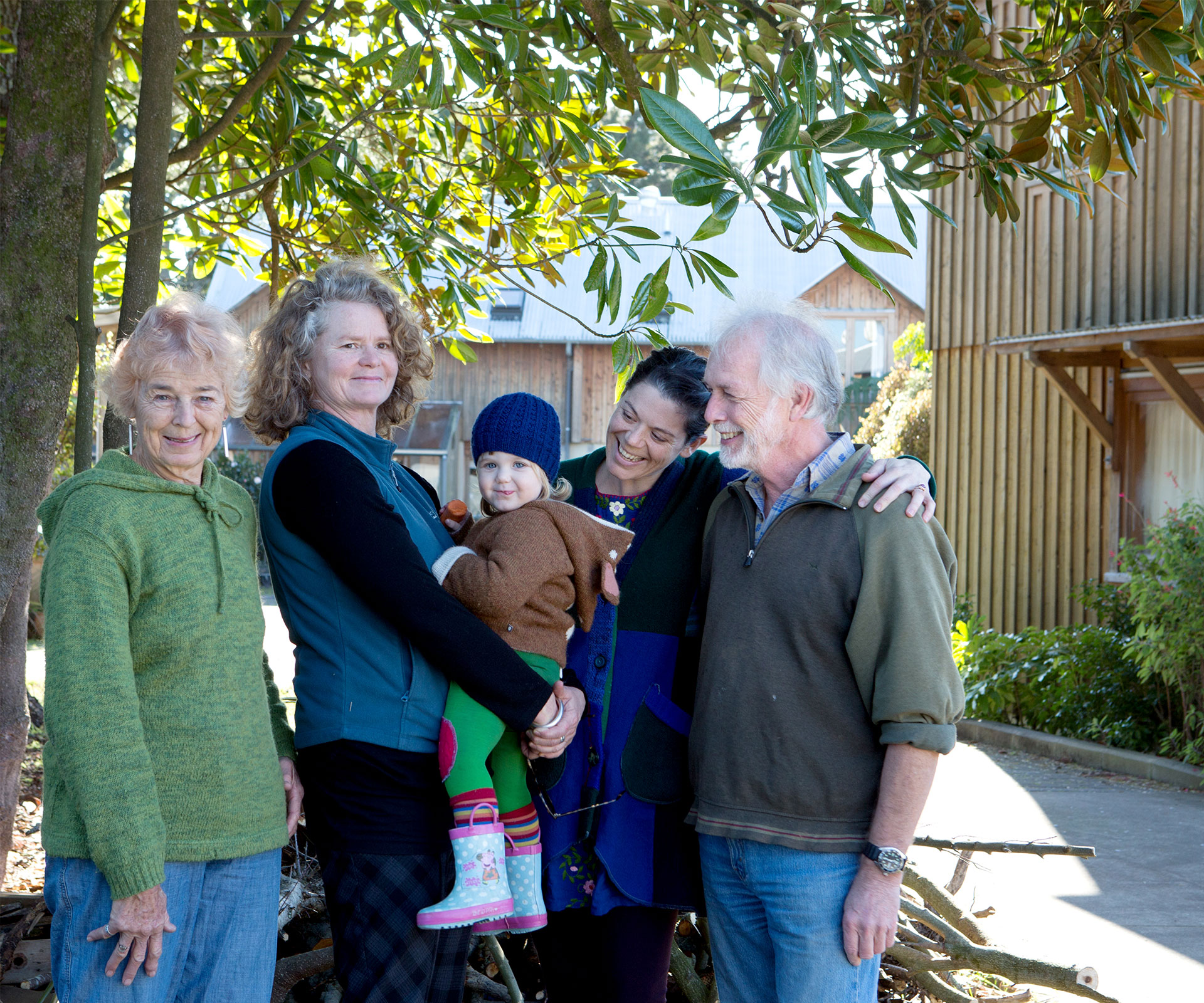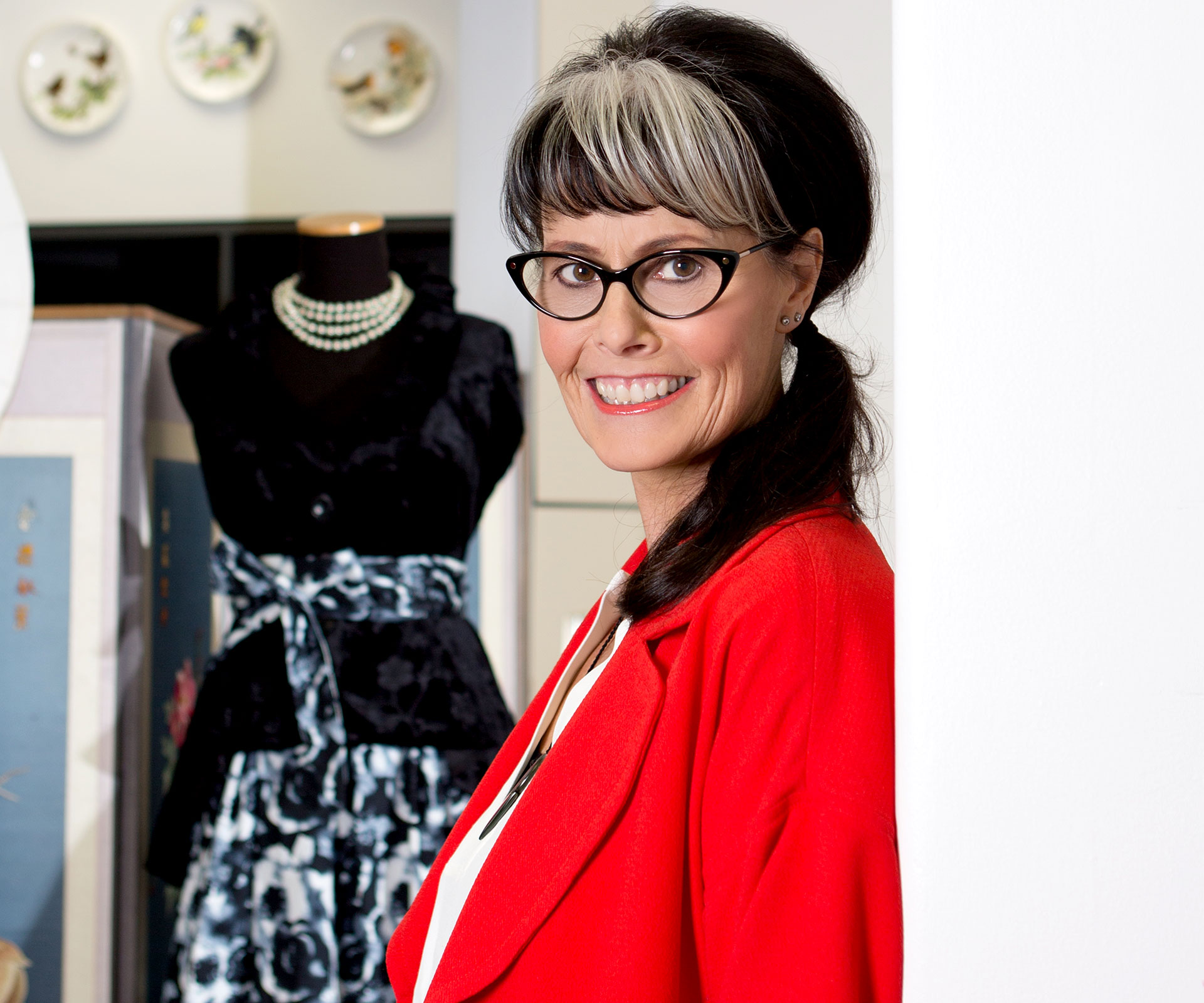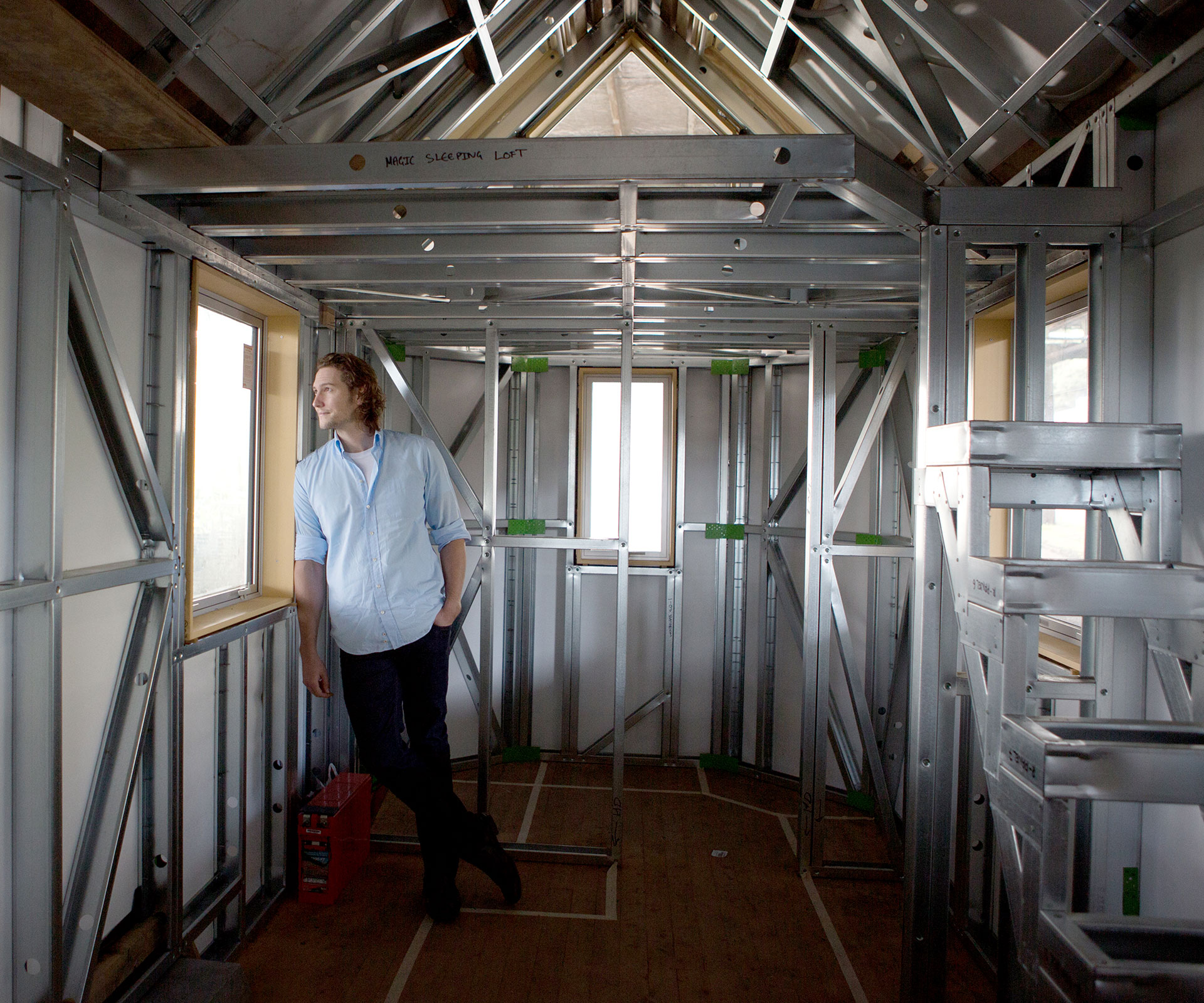Compared to a couple of generations ago, we live in quite an individualistic society. Ties with extended family are no longer as close and our sense of community is limited.
Iain Davies, budgeting mentor at CARE Waitakere, says for 90% of his clients, the problem is lack of support. “Isolation is on the increase and with rates of depression and suicide rising I think something needs to change.”
Earthsong Eco-Neighbourhood is an urban co-housing development which opened in 2008, a pioneer in its field. It’s not cultish or religious or bound by any particular spiritual philosophy but rather a village-style 1.2 hectare plot of land with 32 houses inhabited by people with a shared interest in permaculture principles.
“Everyone who lives here is working towards a socially and environmentally sustainable community,” say resident Amanda Garland. “By that we mean we work on a practical and design level to be environmentally friendly and sustainable but also on a social level too. Living somewhere where decisions are made by consensus means we need clear communication, high levels of co-operation and a deep respect for each other.”
Looking round the Auckland village it feels lush, abundant and really quite idyllic. Everywhere you turn there’s an edible garden or a citrus tree laden with fruit. There are gardens in backyards, in nodes (little streets) and in communal areas. There are beehives, bush, a pond and some lovely looking chickens in a coop. Homes are made from rammed earth and solid timber, giving them a European feel with their big thick walls. Cars are all parked on one side so there are no vehicles near the houses, making it safe for kids to run around as well as conducive to social interaction.
Communal living brings big cost savings too. All houses have solar panels, tank water and electricity is bought in bulk. You’re free to have your own washing machine but most people use one of the four communal ones; same goes for lawnmowers, tools and other items. There’s even a ‘free shelf’ where you can leave things you no longer need or get something you do.
“Part of our vision is to educate people on community design and sustainability and when we have tours through, people are always impressed at how visually pleasant it is. We’ve taken school groups through and they’re always shocked at the amount of food growing freely outside,” says Garland. But it does take time and effort to create this environment.
“People have to be committed to doing their bit and okay with everything being decided as a group. We have some people who take care of maintenance, some of gardening; we have a roster to keep the communal areas well-maintained and clean. Having said that, people can choose their level of involvement. Most residents take part in our community dinners twice a week. At these dinners you and your cooking team cook for almost everyone in Earthsong once a month – and pay for ingredients. But for the other seven dinners a month you don’t need to do anything. This is optional but most families say it works well for them.”
What Earthsong is doing is unusual, especially in an urban setting. There is another similar neighbourhood being built in Dunedin but not many others in the country. Garland says it’s far more popular overseas. “There are between 400 and 600 in Denmark and it’s becoming big in the States too. We hope to see more in New Zealand. I think we’ve strayed so far from the sense of community we had in decades gone by and it’d be incredible for us as a society to reconnect and go back to sharing our resources, knowledge and support.”

Iain Davies is part of a group that buys organics in bulk, to make healthy eating affordable for families.
The people’s pantry
Sharing doesn’t have to involve communal living. The beauty of the trend is you can pick and choose what you want to share and apply it to your daily life.
Budgeting mentor Davies believes sharing and dispersal and working with communities of like-minded individuals is the way forward and he’s seeing more people doing similar in recent times. “It’s a slow movement but it’s gaining momentum. If nothing else, necessity will drive people to think more communally.”
Davies has a strong focus on health for his family but because organic food is notoriously expensive, he goes in with a group of around 30 who have a wholesale account with an organics company. They buy in bulk and divide it up, getting great quality food for much less.
“The guy who runs it has got pretty clever at ordering the right amount and he just orders oats, nuts, seeds, oils etc in bulk. Once a month we all meet and buy what we want. It’s significantly less expensive than buying at retail prices and it’s a lovely way to shop too. We bring the kids and catch up with others. We also get ideas on how to cook things while chatting over what we’re buying. So much nicer than a supermarket trip.”
Davies is also part of a group who buy raw milk. “We get milk every week but only have to go out and get it once every two months. It saves so much petrol and time. There are quite a few of us who are into the benefits of milk as it used to be before homogenisation, and there are people in the group who have kids who they thought were dairy intolerant but can drink this. It works really well when we have eight in the group or more as we don’t have to go very often.”
Judy Keats is an advocate of sharing too. A pattern maker, she also runs the Triangle Park Massey Community Garden in west Auckland. “We started up around four years ago when the Massey Community House expressed an interest in having an edible garden. It’s been a wonderful journey and the garden is now quite a visual as well as practical feature,” Keats says.

Judy Keats loves to give people gardening skills they can pass on.
Valuable volunteers
Volunteer days are Wednesday and Saturday. “We have around 12 fairly regular volunteers across a month and others who come and go,” says Keats. “We grow an enormous variety of vegetables and herbs as well as fruit in the warmer months.
“There’s salad greens, root veges, brassicas, peach trees, fig, quinces, feijoa and so much more; we even have banana trees! We’ve also started growing plants like echinacea and calendula so we can learn more.”
The garden is indeed a sight to behold, even in winter, and it’s serene watching gardeners potter around harvesting vege-tables. Today a volunteer, Helene, has just harvested a load of rhubarb. “It’s wonderful being part of this. Setting up a garden at home would be too overwhelming. This is such a great solution,” she says. Volunteer ages range from eight to 80. Some are mad-keen gardeners, some novices. Anyone who helps regularly is welcome to take home what they like.
“It’s great on a practical level but I also get excited about giving people these skills they in turn can pass on,” says Keats. “It’s so great to share further than ourselves and I send out regular emails to our database talking about what they can be planting or should be doing at that time of the year.”
Keats hopes to see more of this nation-wide. “People are talking about bigger projects and food hubs and there are more gardens popping up all over the place. It makes me happy to think of the impact it’s having on our collective health too. Teaching people to feed their families in a nutritious way is so positive.”
Words by: Alexia Santamaria
Photos: Antony Nyberg, Earthsong, Emily Chalk


